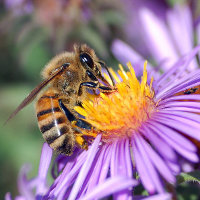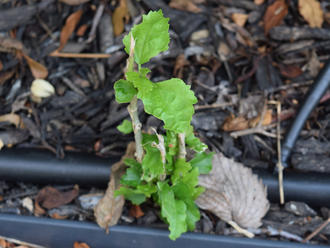Rose of Sharon (Hibiscus syriacus L.)
Also known as common hibiscus.
↑Summary
Native to Asia and introduced in North America, where it has historically been widely grown as a gardening plant.
↑Range - Expand
| Legend | Color |
| Introduced | |
| Introduced or Not Present |
This tentative map is based on our own research. It may have limited data on Canada and/or Mexico, and there is some subjectivity in our assignment of plants as introduced vs. expanded. Read more in this blog post.
Although this plant occurs somewhere in each of these regions, it may only occur in a small part of some or all of them.
↑Habitat
In North America, common and often abundant in suburban gardens and partly-shaded weedy patches and semi-wild areas near landscaping. Found on drier ground than any of the native Hibiscus species, which are wetland plants.
↑Uses
Widely planted as a landscaping plant, where it is valued for its showy flowers, ease of growing, and ability to be easily pruned into different growth habits, including use as a hedge, or alternatively, a single-trunk growth habit.
↑Related Plants
Numerous Hibiscus species, both native and introduced, are found in North America. Of these, H. trionum is the only introduced species with a wide range, and has a much wider distribution. The native H. moscheutos and H. laevis also have wide distributions in the southeast, but are limited to wetlands.
↑Links & External Resources
• Hibiscus syriacus (Rose of Sharon) | USDA PLANTS Database (About This Site)
• Hibiscus syriacus | Go Botany (About This Site)
• Common Hibiscus | iNaturalist (About This Site)
• Hibiscus syriacus (Rose of Sharon) | Missouri Botanical Garden Plant Finder (About This Site)
• Rose-of-Sharon | Virginia Tech Dendrology Factsheets (About This Site)
• Hibiscus syriacus | Biota of North America Project (BONAP) (About This Site)
• Hibiscus syriacus | NatureServe Explorer (About This Site)
• Hibiscus syriacus | Flora of North America (About This Site)
• Hibiscus syriacus | Missouri Plants (About This Site)
• Rose of Sharon | Maryland Biodiversity Project (About This Site)
• Hibiscus syriacus L. (Rose-of-Sharon, Althaea) | Digital Atlas of the Virginia Flora (About This Site)



